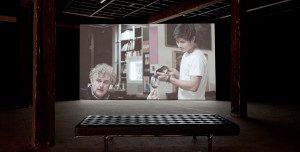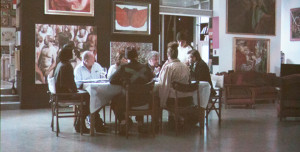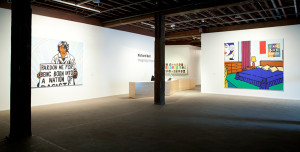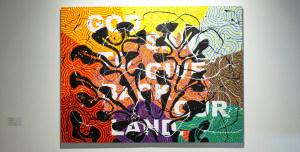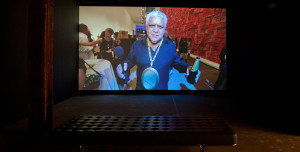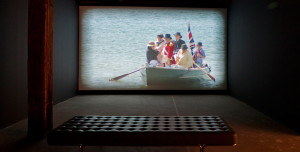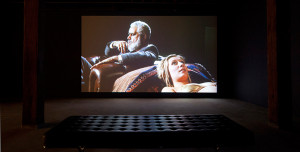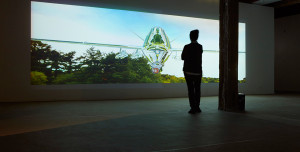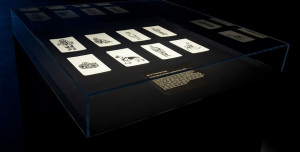Exhibition
Richard Bell
Imagining Victory
26 Jun – 11 Aug 2013

Artspace
43–51 Cowper Wharf Roadway
Woolloomooloo NSW 2011
Sydney Australia
Artspace presents Imagining Victory a significant solo exhibition of Richard Bell’s highly acclaimed and challenging works Scratch an Aussie (2008) and Broken English (2009), and the premiere of Bell’s trilogy-culminating new work The Dinner Party (2013).
Bell has been a leading force within the field of contemporary Australian art since the 1990s, making provocative gestures and works that often confront Australia’s arguably contentious racial relations, or as Bell describes of his objectives, as ‘an activist masquerading as an artist’. The artist frequently integrates expressions of political, cultural, social and economic disenchantment emerging out of the relationship between Aboriginal peoples and colonial migrants to Australia.
Scratch an Aussie (2008) takes form as a Freudian therapy session in which Bell opens up to a therapist, played by Gary Foley, about his perceptions of race relations. This session is interspersed with Bell assuming the role of therapist for a group of young blonde-haired Australians as he urges them to frankly discuss their concerns and attitudes about Aboriginal people. In Broken English (2009) Bell elucidates questions of Aboriginal political empowerment through questions posed within the various contexts of a chess game, a gallery opening and an Australia Day re-enactment of Captain Cook's landing.
Bell’s trilogy of films will be completed through the premiere of The Dinner Party. In this film, the artist uses Brisbane’s picturesque riverfront as a backdrop for a well-catered dinner party in a luxurious mansion. Over the course of the dinner a number of famous Australians will speak, as if privately, of their views of the interrelationship between Aboriginal and non-Aboriginal people in this country. These conversations and discussions occur within a context of privilege, both economic and social, and far-removed from the most obvious sites of Aboriginal disaffection and political, cultural, social and economic inequities.
